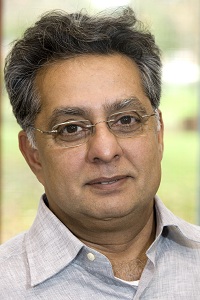CAA Report Links Aircraft Noise With Illness
Report shows increased risk of heart attacks, strokes & dementia
A new report by the Civil Aviation Authority (CAA) concludes that exposure to night-time aircraft noise increases the risk of serious health problems including heart attacks, strokes and dementia.
The document is to be considered as part of a Government consultation on the rules governing night flights at Heathrow, Gatwick and Stansted airports.
It is the first time the national aviation regulator has put forward evidence on the health impacts of aircraft noise.
The report draws together a wide range of research from across the UK and Europe. In its conclusion the CAA confirms that:
• Average night-time aircraft noise levels above 55 decibels result in increased risk of heart attacks.*
• Average night-time aircraft noise levels above 45 decibels result in increased risk of high blood pressure, and this can lead to hypertensive strokes and dementia.*
According to CAA figures, the average night-time aircraft noise level in Putney and Wandsworth Town is above 45 decibels.
 Leader of Wandsworth Council Ravi Govindia said: "At long last the health impacts of night flights are being considered. This is not just about irritation and lost sleep. There can be serious consequence for the health and well-being of people living under a busy flightpath.
Leader of Wandsworth Council Ravi Govindia said: "At long last the health impacts of night flights are being considered. This is not just about irritation and lost sleep. There can be serious consequence for the health and well-being of people living under a busy flightpath.
“Heathrow’s position to the west of London means that its flightpaths have to cut across the most densely populated part of the country. This ensures the numbers of people suffering from aircraft noise disturbance is as high as it could possibly be.
Expanding this airport further would maximise the damage done to public health.
“This council has long campaigned for a complete ban on night flights and we will be making our case once again in the light of this research. I strongly urge local people to read the consultation documents and to make their voices heard.”
| * Average night-time aircraft noise (Lnight) is calculated over an 8 hour period. Extracts from the CAA report conclusion are as follows: • Levels above 55 dB Lnight result in increased risk of myocardial infarctions… • Levels above 45 dB Lnight result in increased risk of hypertension, and this can lead to hypertensive strokes and dementia… An extract (Page 49) from the Department for Transport’s Aviation Framework Consultation 2012 reads: "4.5 Whilst noise is a concern at all airports, Heathrow Airport accounts for approximately 70 per cent of people in the UK exposed to average noise from airports above 55 decibels. More than one in four people exposed to this level of noise around European airports lives near Heathrow. In fact, by this measure, Heathrow’s noise impact easily exceeds the combined impact of all the other hub airports in Western Europe, despite each having approximately similar numbers of movements." |
The existing night flights regime for Heathrow, Gatwick and Stansted comes to an end in October 2014 and the consultation will help shape the new system. Responses must be submitted by April 22.
A second stage consultation on more detailed proposals will follow.
Under the existing ‘night flight quota’ Heathrow is allowed to land an average of 16 flights between 11.30pm and 6am each night. In practice almost all of these planes are brought in to land between 4.30am and 6am – waking Wandsworth residents on a daily basis.
The arrival flightpaths for both Heathrow runways carve across parts of Battersea, Wandsworth Town and Putney. Departing planes also cause noise disturbance in Tooting and Earlsfield.
View the consultation documents online at www.gov.uk/government/consultations/night-flights-consultation.
Any enquiries should be sent to night.noise@dft.gsi.gov.uk or by post to:
Night noise consultation
Department for Transport Great Minster House
33 Horseferry Road
London SW1P 4DR
For information about Heathrow’s on going flight pattern trial (which does not affect night flights) visit www.wandsworth.gov.uk/heathrowtrial
February 5, 2013
